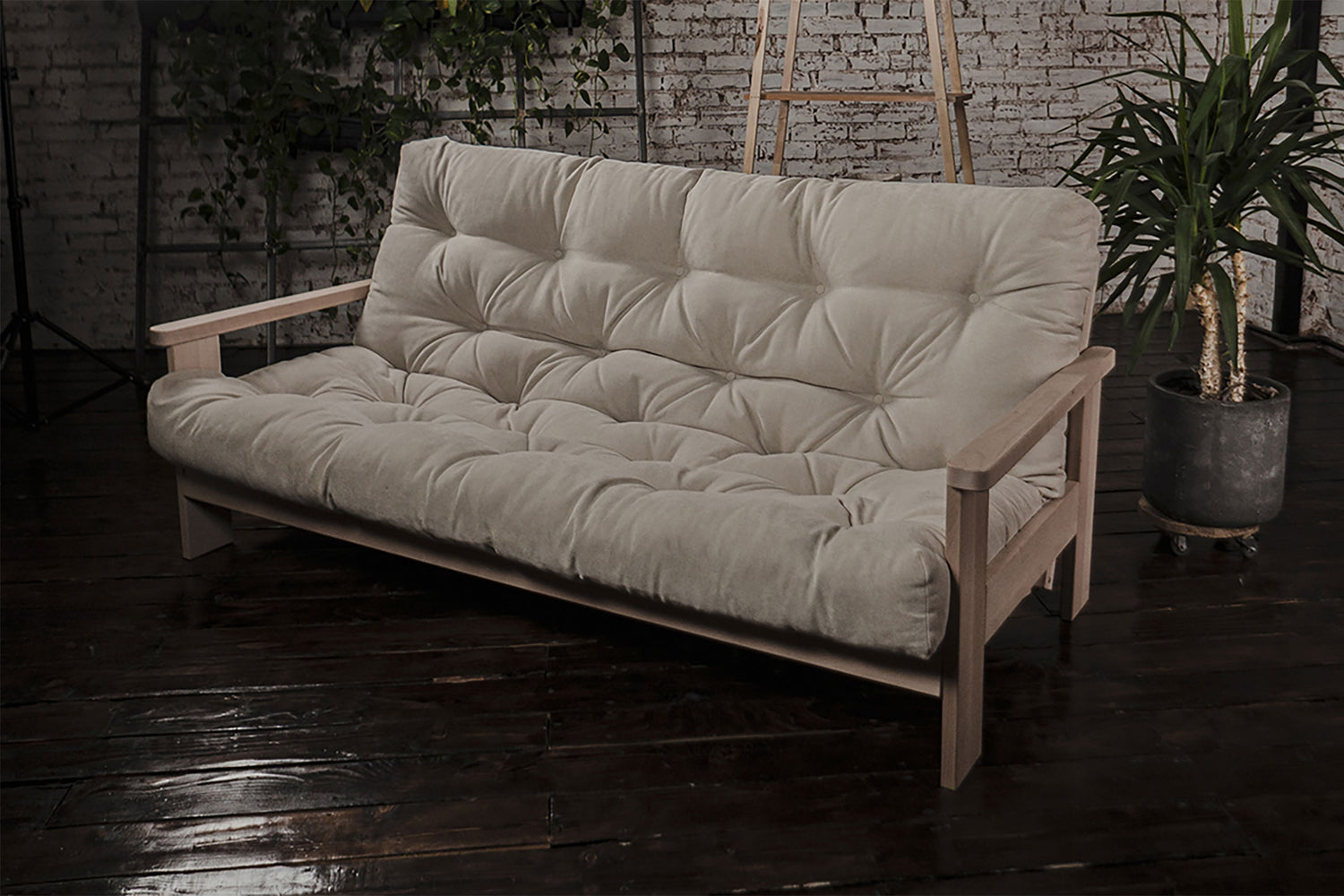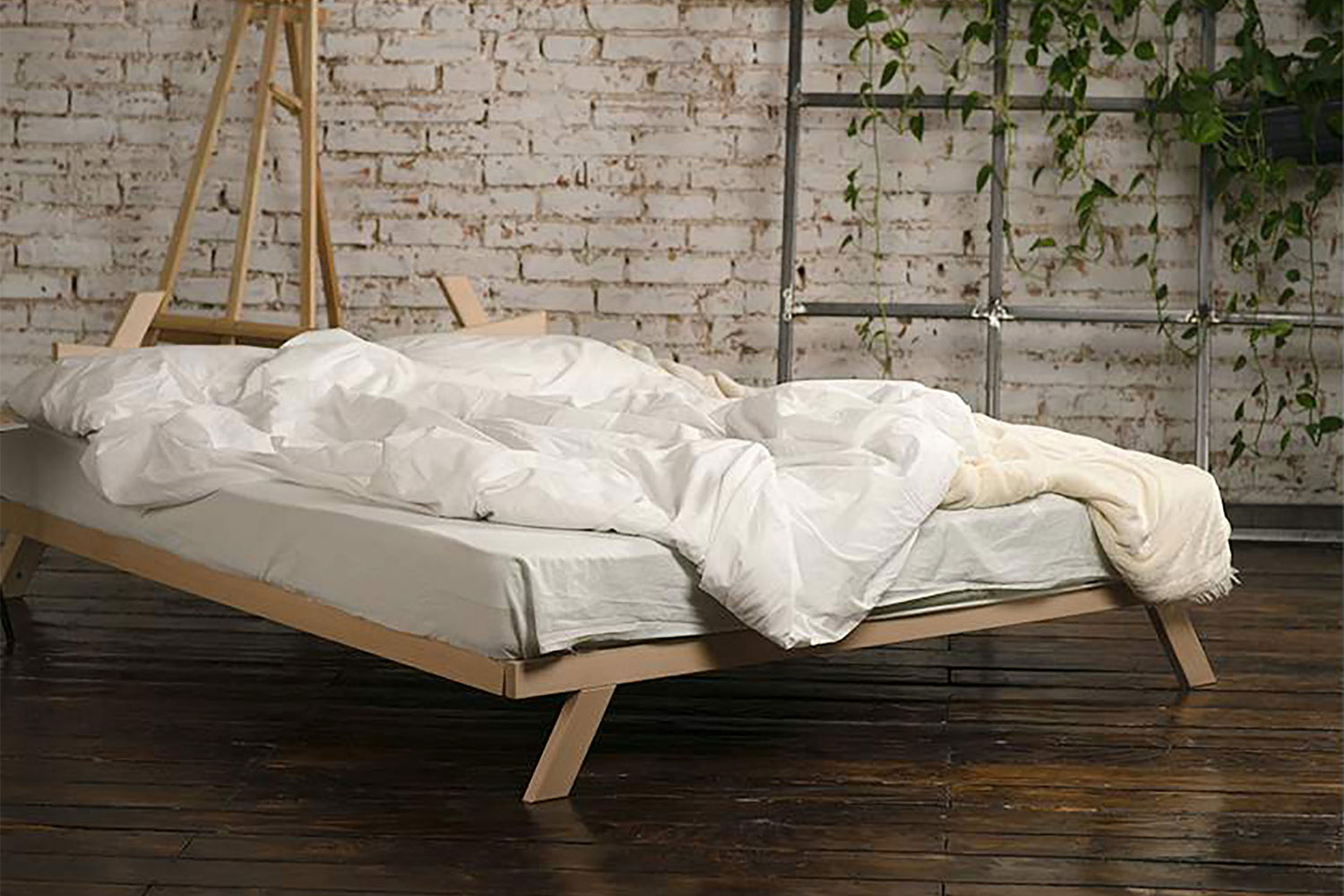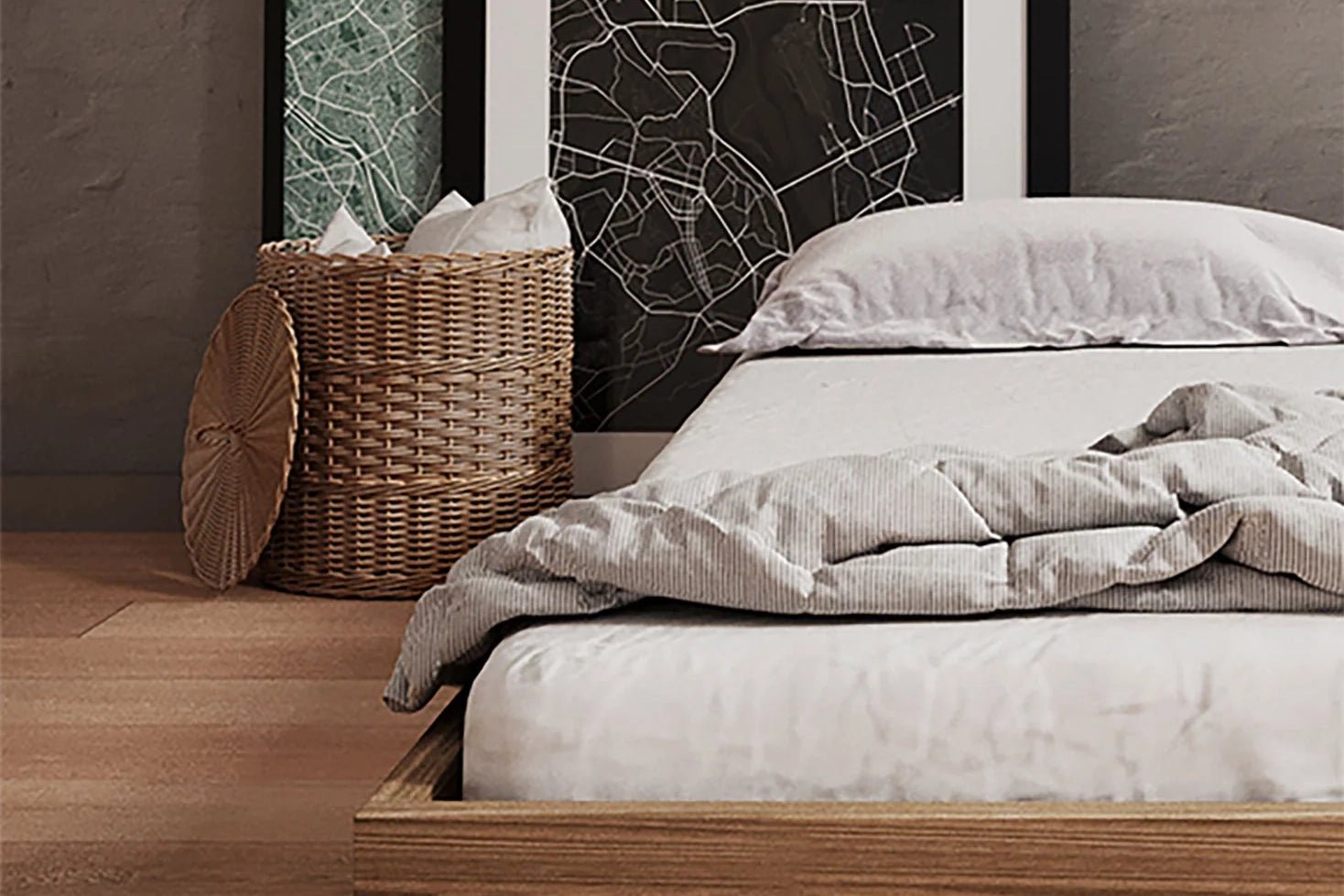
Shikibutons Explained: Health Benefits, How to Choose, and Everything You Need to Know
Share
A shikibuton is a traditional Japanese mattress that offers a unique and minimalist sleep experience. Laid directly on the floor or atop a tatami mat, it provides firm support for a restful night’s sleep. Whether you’re seeking the benefits of an organic shikibuton or exploring different bedding setups, this guide will help you understand how to choose the best option for your needs. From selecting the right thickness to maintaining your shikibuton with covers and protectors, we’ll cover everything you need to know for the perfect setup.
What is a Shikibuton?
A shikibuton, also spelled shikibuton or shikibuton mattress, is a traditional Japanese mattress designed to be laid directly on the floor. In Japanese, the word “shikibuton” literally translates to “spread futon” (敷布団), referring to a mattress that is laid out for sleep and then folded and stored during the day. Unlike Western-style beds, a Japanese shikibuton doesn’t require a frame or box spring. Instead, it’s meant to be placed on a tatami mat or any flat, firm surface, and it’s easily folded up and stored when not in use. Shikibutons are typically made from natural materials like cotton or wool, and some modern versions also include natural latex for added resilience and support. This simple, minimalist approach reflects Japanese culture’s emphasis on space efficiency, versatility, and mindful living.
Shikibuton vs. Futon
Although the terms shikibuton and futon are often used interchangeably, there are key differences:
- Shikibuton: In Japan, the term specifically refers to the sleeping mat or mattress laid on the floor. Shikibutons are traditionally thinner and designed to be firm yet comfortable. They’re commonly paired with a tatami mat, which adds a touch of softness and support.
- Western Futon: In the West, a “futon” typically refers to a thicker mattress or a futon sofa that can convert between a couch and a bed. Western futons are usually thicker, more cushioned, and intended to be used on a foldable frame. They’re often closer to a traditional mattress in structure and feel—and are commonly used as sofa beds in everyday living spaces.
Traditional Japanese Floor Bed
The Japanese floor bed setup, known as a futon bedding system, includes several components: a shikibuton mattress, a tatami mat (or alternative firm mat like a coconut coir bed rug), a kakebuton (comforter), and a pillow. This arrangement is ideal for those seeking a minimalist, space-saving sleep solution. Since the entire setup is lightweight and foldable, it allows for easy storage, making it practical for small living spaces. Many Japanese households still use this system, appreciating its simplicity, air circulation, and the cleanliness benefits of airing out bedding regularly.
Benefits of Sleeping on a Shikibuton
Sleeping on a shikibuton offers several benefits:
- Better Spinal Alignment: The firmness of a shikibuton encourages natural spinal alignment, which can help improve posture and reduce back pain over time. The floor setup supports an even distribution of body weight, reducing pressure points.
- Improved Airflow and Breathability: Shikibutons, often made of natural materials like cotton and wool, offer good airflow, preventing the build-up of heat and moisture that can occur with some conventional mattresses.
- Minimalist Lifestyle: Shikibutons encourage a minimalist approach, reducing the need for bulky frames and box springs. They’re also ideal for multipurpose rooms since they can be easily folded and stored.
- Enhanced Sleep Quality: Sleeping closer to the floor can help with body temperature regulation, potentially promoting a more restful sleep. Additionally, some people find that the firmer surface reduces tossing and turning, leading to better quality rest.
- Eco-Friendly: Many shikibutons are crafted from natural, biodegradable materials, making them an eco-conscious choice compared to synthetic mattresses that can contain chemicals and non-renewable materials.

Shikibuton for Better Sleep
Shikibutons, with their firm and supportive structure, encourage a sleep posture that aligns the spine naturally. By providing even support across the body, they help reduce pressure points and limit tossing and turning. Many people find that this promotes deeper, more restful sleep, especially when combined with proper airflow from natural materials like cotton or wool.
Benefits of Sleeping on the Floor
Sleeping on the floor offers unique benefits, including improved blood circulation, better posture, and potentially reduced joint pain. A firm sleeping surface promotes natural spinal alignment, which can alleviate stress on the back and hips. In warmer climates, floor sleeping can also help keep you cooler during the night due to the lower ambient temperature closer to the ground.
Is a Shikibuton Good for Back Pain?
Yes, shikibutons can be beneficial for individuals with back pain. Their firmness supports the back evenly, preventing sagging that can exacerbate lower back pain. By aligning the spine naturally, they help reduce strain on the back muscles and encourage a healthy sleeping posture. People with chronic pain may find that shikibutons provide the support needed without excessive cushion or softness.
How to Make a Shikibuton More Comfortable
If a shikibuton feels too firm, consider adding a tatami mat or a soft topper, such as a wool or cotton mattress pad, to add a bit of cushioning without losing the mattress's supportive benefits. Regularly airing out and fluffing the shikibuton can also help maintain its shape and comfort level, while adding layers like blankets can provide additional warmth or softness.
Shikibuton Thickness
Shikibutons typically range in thickness from 2 to 4 inches. Thinner shikibutons (around 2–3 inches) provide firmer support and are ideal for those seeking a traditional experience and strong back support. Thicker options (closer to 4 inches) offer extra cushioning, which may appeal to those accustomed to softer surfaces. Some modern shikibutons incorporate natural latex to enhance support and resilience while keeping the design natural and chemical-free. Choosing the right thickness often depends on personal comfort preferences and any specific support needs.

Practical Questions
To maintain your shikibuton, start with regular airing in sunlight to reduce moisture and odors. For protection against stains and spills, consider a waterproof mattress protector or a machine-washable futon cover, both of which provide a removable layer that simplifies maintenance. For minor stains, spot-clean the shikibuton with a mild detergent, avoiding excess water. For routine dust removal, vacuum it with a fabric-safe attachment.
How to Store a Shikibuton
To store a shikibuton properly, fold it into thirds lengthwise, then roll or fold it for compact storage. It’s best to keep it in a dry, well-ventilated area to prevent moisture buildup, which can lead to mildew. Consider using a breathable storage bag to protect it from dust and humidity. Regularly air it out in sunlight to keep it fresh.
Tatami Mat and Shikibuton Setup
The traditional shikibuton setup involves laying the mattress on a tatami mat. Tatami mats add a slight cushion, promote air circulation, and provide an authentic Japanese floor-bed experience. They help keep the shikibuton elevated from cold floors and maintain its shape by providing a supportive, breathable base.
How to Choose the Best Shikibuton
When choosing the best shikibuton for your needs, consider factors like thickness, material, and the overall setup. Most popular 3-inch and 4-inch options are ideal for those seeking firmer support, while a wool and cotton 6-inch shikibuton offers additional cushioning for a softer feel. This thicker option may be perfect for individuals looking for more comfort without sacrificing the traditional benefits of a shikibuton. If you’re looking for a sustainable option, an organic shikibuton made from natural cotton or wool is an eco-friendly choice.
Choosing an organic shikibuton also ensures a cleaner sleep environment. Conventional mattresses can contain flame retardants, synthetic foams, and chemical adhesives, but organic shikibutons are made from natural, biodegradable materials that are healthier for both your body and the planet.
Pairing your shikibuton with a tatami mat provides a traditional setup with added support and airflow. For added convenience and hygiene, invest in a shikibuton cover that’s machine washable or a waterproof protector. These options keep the mattress clean and make maintenance easier.
For those who prefer a raised sleeping experience, a shikibuton bed frame offers a supportive base that retains the low-profile style of a Japanese shikibuton mattress.
Where to Buy a Quality Shikibuton
At Comfort Pure, we offer high-quality shikibutons made from natural and organic materials like cotton, wool, and latex. Each mattress is designed to deliver supportive, chemical-free sleep with durability in mind. Whether you’re looking for a traditional 3-inch shikibuton, a plush 6-inch version, or a complete tatami setup, our collection provides options for every sleep preference and lifestyle.
Whether your goal is better posture, minimalist living, or a more eco-friendly bedroom, a shikibuton offers a timeless sleeping solution rooted in Japanese tradition and perfectly suited for modern life.











